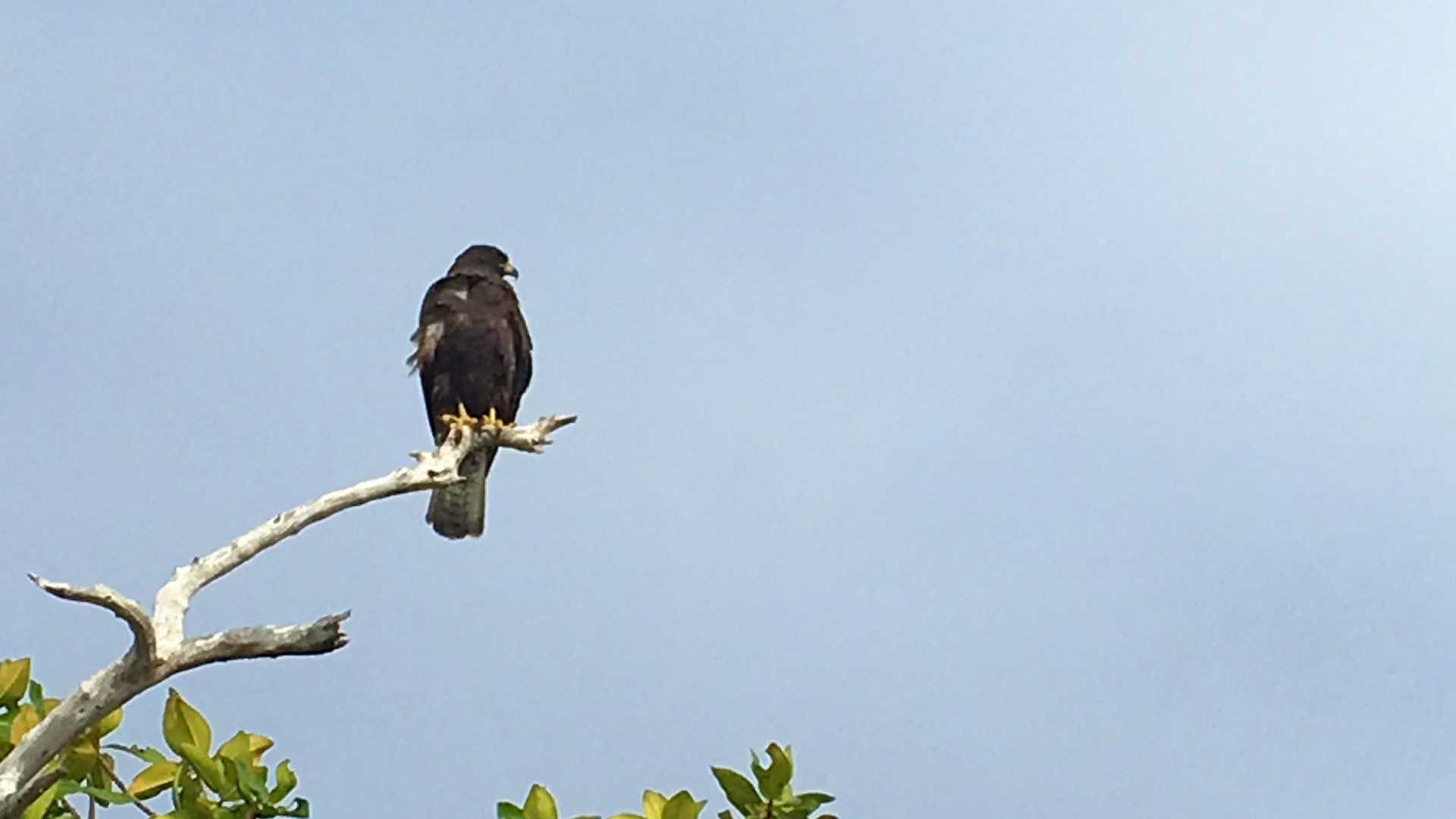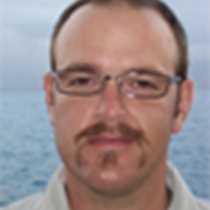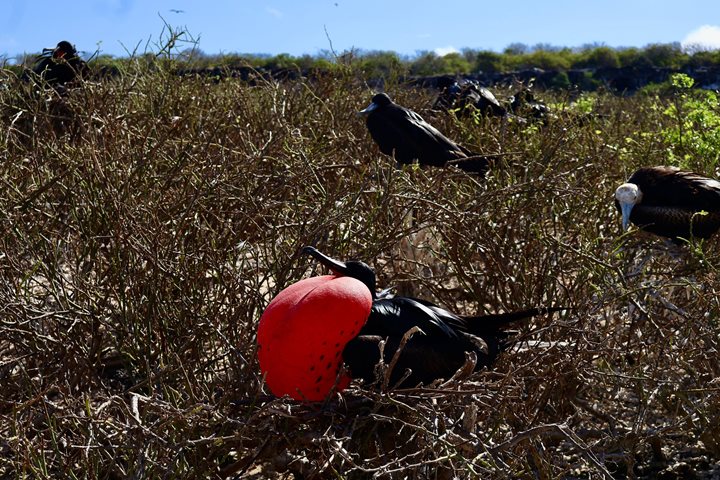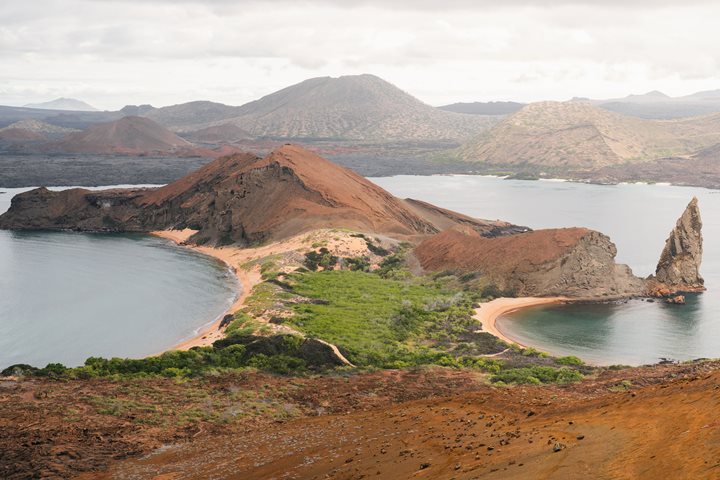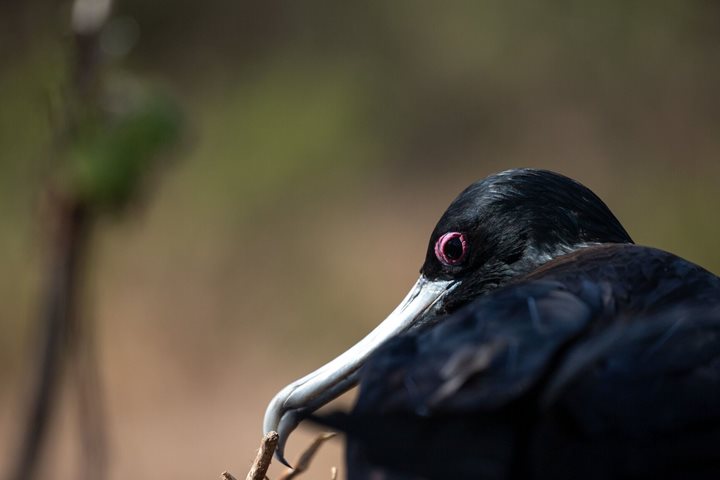A drastic contrast is encountered as we awaken close to Fernandina Island in the western realm of the archipelago. A deep blue sky is a backdrop for the massive volcano La Cumbre, which is the shield volcano of Fernandina. This barren island is home to one of the largest populations of marine iguanas in Galapagos. Marine iguanas slowly make their way to the water to feed as they warm up and become active. Young sea lion pups play in the shallows and a Galapagos hawk soars just over our heads. Galapagos penguins flit about along the coast as Pacific green sea turtles feed in the tidal pools. This “barren” island is vibrantly alive with activity! Afternoon arrives along with our navigation to northern Isabela. Flightless cormorants and Galapagos penguins are found along the coast of Punta Vicente Roca as we explore. A massive cliff is before us showing this area’s violent volcanic past as we eventually bring our Zodiacs aboard and head north, crossing the Equatorial line as the sun finishes its duty of the day and sets.
6/13/2025
Read
National Geographic Endeavour II
Genovesa Island
We started the day with excitement as we landed on the beautiful, pristine coast of Isla Genovesa - a true birder’s dream. Along the sandy beaches and steep cliffs of Darwin Bay, we were surrounded by an incredible array of birdlife. Frigatebirds soared closely overhead with their red pouches on full display, while Nazca and blue-footed boobies nested along the rocky ledges. Swallow-tailed gulls called out as we walked past. In the distance, we saw the stoic and elusive short-eared owl. The island was alive with color, sound, and constant movement. Between our excursions to Isla Genovesa, we snorkeled near Prince Philip’s Steps and discovered a vibrant world beneath the waves. Schools of fish swirled around us, a fur seal turned in the water as if dancing on cue, and sea lions relaxed nearby. As our last snorkeling adventure came to a close, we spotted a sea turtle resting calmly in a crevice. As the sun retreated into the sky on our last return to National Geographic Endeavor II, we reflected on the sheer magnitude of what we witnessed on our last full day. Isla Genovesa, like the other islands, gave us a connection to a sacred world. The harmony between land, sea, and sky reminded us how deeply interconnected, vital, and fragile these ecosystems are. Watching birds tend to their nests and marine life swim effortlessly, we were struck by how little space there is between wonder and reverence. We recognized that our journey wasn’t just about observing unique wildlife, it was about feeling part of something grander and beautifully ancient.

